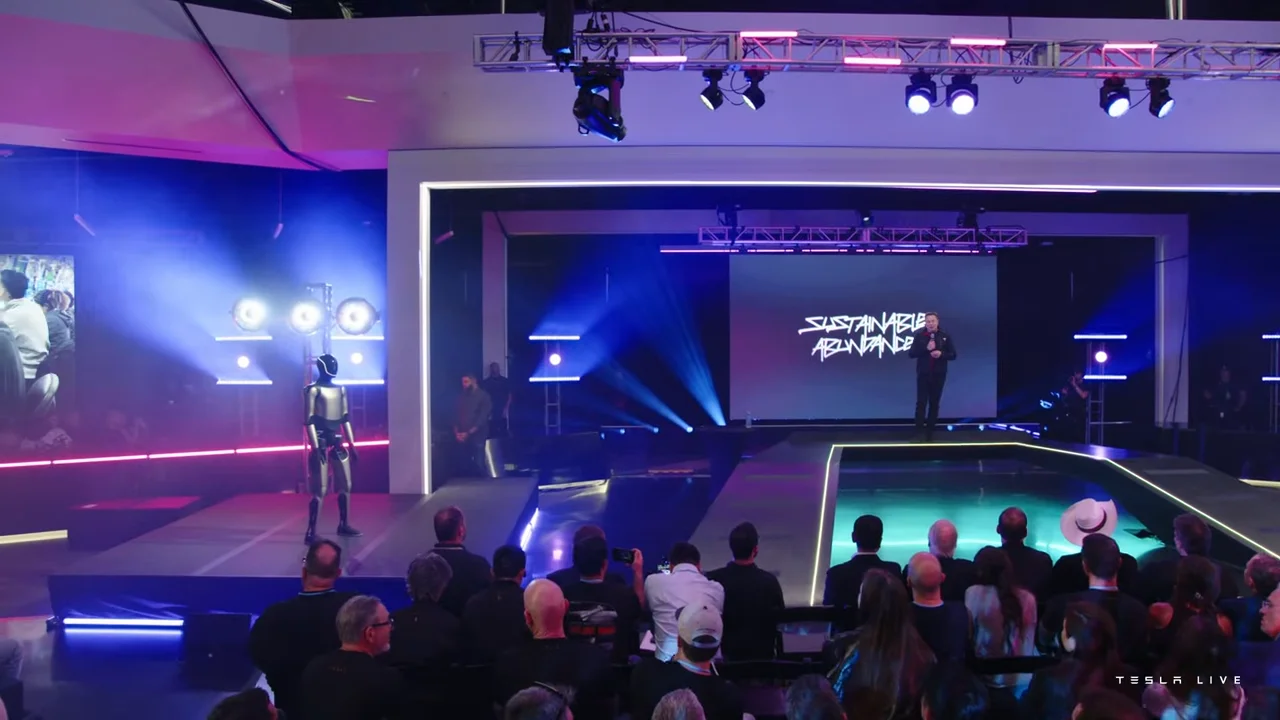- Published on
Skepticism Mounts: Forbes Editor Calls Tesla's Optimus Project a "Publicity Stunt"

Tesla's ambitious pivot to humanoid robotics faced a sharp public critique today, with Forbes Senior Editor Alan Ohnsman dismissing the Optimus program as a "publicity stunt" during a Forbes Breaking News segment.
Ohnsman argued that CEO Elon Musk's primary talent is not engineering but "his ability to really get investors excited about future ideas." He frames the recent focus on Optimus—which immediately followed the approval of Musk's controversial compensation package at the 2025 shareholder meeting—as the latest example of this pattern.
"Right now, it's a publicity stunt," Ohnsman stated, noting that Tesla "has sold exactly zero humanoid robots as of today."
He characterized Musk's vision for the robot, which includes applications from personal assistance ("guilt-free slavery") to healthcare and law enforcement, as "kind of out there."
"He claims these will cost about $20,000 to build and believes that billions will eventually be sold," Ohnsman said. "It's just deeply questionable because Tesla, frankly, has not been a robotics company... They've been a car company and a battery company."

Critique vs. Concrete Plans
Ohnsman's deep skepticism contrasts directly with the specific, near-term manufacturing plans Tesla laid out during its recent shareholder meeting and Q3 2025 earnings call.
While Ohnsman questioned the $20,000 figure, Elon Musk recently provided that exact number as a production cost target during the 2025 shareholder meeting.
Furthermore, Tesla's manufacturing plans have moved beyond concepts to specific locations. The company has repeatedly targeted a 1-million-unit-per-year production rate, recently identifying Fremont, California, as the site for its first high-volume line.
Tesla has already confirmed that its "first generation production lines" are being installed and even showed shareholders video of its current "prototype production line." The project's AI lead, Julian Ibarz, clarified that this R&D line is completely different from the "real scalable production line" expected next year.
All these efforts are aimed at producing a "production-intent" V3 Optimus prototype, which Musk has slated for a Q1 2026 reveal.
A "Hard Sell" for a New Future
Ohnsman's critique is not limited to technical feasibility but extends to corporate governance and focus. He positioned the Optimus announcement as part of a "hard sell for this new future" that is "AI-powered."
This new AI focus includes a potential, controversial vote for Tesla to invest directly in Musk's other company, xAI, a move Ohnsman called "incredibly self-serving."
The Forbes editor argued that Musk's attention is dangerously divided, stating it is "just not believable that one individual can be a dedicated CEO to six companies simultaneously," referencing Tesla, SpaceX, X, xAI, Neuralink, and The Boring Company.
This broader context frames the Optimus project in a different light. While Tesla details its unified AI "world simulator" strategy and begins installing production hardware, critics like Ohnsman see the project less as a grounded business venture and more as a "magical thinking" exercise—a grand, future-facing narrative to justify an "exorbitant" pay package and keep investors focused on the next big thing, rather than on the company's current challenges.
Watch the segment below:
Share this article
Stay Ahead in Humanoid Robotics
Get the latest developments, breakthroughs, and insights in humanoid robotics — delivered straight to your inbox.